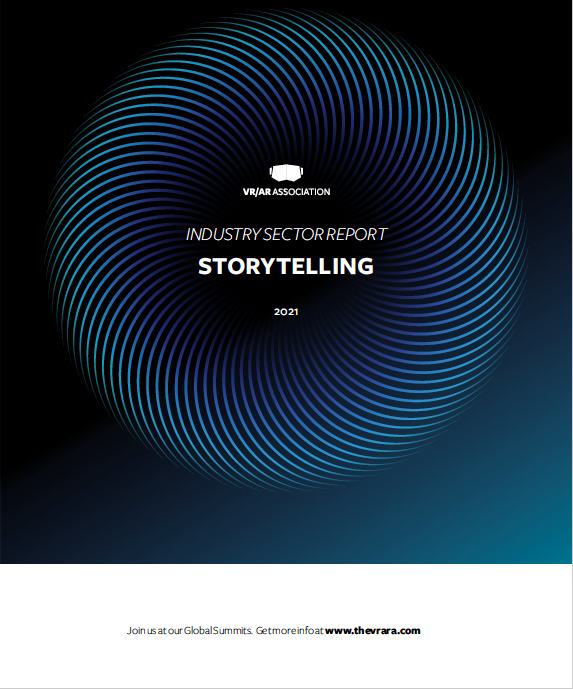Foreword By VRARA Storytelling Chair, Chris Pfaff
The immersive storytelling industry sector is growing exponentially, as creation engines and game engines are improved to enable rapid immersive content development and delivery. Producers have utilized the COVID-19 pandemic to broaden XR experiences in areas such as virtual theatre (e.g., ‘FindingPandoraX’), gamified live content (e.g., concerts in Roblox, Fortnite and League of Legends), and virtual location-based entertainment (LBE) (e.g., Metropolitan Museum, Krasner-Pollock House).
The entire immersive industry is essentially an exercise in “storytelling,” as virtual experiences deliver a grammar and a narrative structure for educating, informing, and entertaining users/customers/ spectators/fans in new ways. The immersive storytelling industry is now poised to become a larger part of communications and advertising, edutainment, and enterprise collaboration.
What were once utilitarian platforms for enterprise and industrial applications are now broadened to gameplay, requiring skill sets that are far beyond optical networking, GPU design, or display configurations.
Now, immersive storytelling embodies technologists who are as skilled inCAD/CAM,Unreal Engine/Unity, and Blender/Maya as they are in light field optics and field array components.
This report details companies that embody production, story creation, post-production, trans-media, game development, branded content, advertising and communications, and a host of technical areas that enable the new world of storytelling across the broad immersive spectrum.
Also, we invite you to join our weekly Online Meets with guest presenters & live discussions to help you grow your connections, knowledge, and your business.




